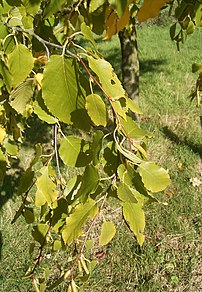[amazon_link asins=’B06XCZJ1F6,B0046VXMQI,B003LJH1E0,B00GO7Z850,B01HNVHSQC,B0018T0YG2,B00PPRH45C,B000JFJGOW,B01M14D5LU’ template=’ProductCarousel’ store=’finmeacur-20′ marketplace=’US’ link_id=’72fba2ca-74d1-11e7-a430-33e19c002893′][amazon_link asins=’B01DJUJ2YM,B01CA2WRLA,B00XEDF5QO,B00RXG2FFM,B00ZGBQZVG,B01ISJCNY0,B00FSUW71C,B00A85VL00,B06Y5FZ9XB’ template=’ProductCarousel’ store=’finmeacur-20′ marketplace=’US’ link_id=’3cb151f0-74d1-11e7-8507-a553b2d97f09′]

Botanical Name: Betula lenta
Family: Betulaceae
Genus: Betula
Subgenus:Betulenta
Species:B. lenta
Kingdom:Plantae
Order: Fagales
Popular Name(s):Cherry birch, mahogany birch, mountain mahogany, spice birch, and sweet birch. Mountain Mahogany,
Parts Used: Inner bark, twigs & leaves
Flowers: April – May
Habitat: Black Birch is native to eastern North America. Forests or open woods, especially moist, north facing, protected slopes; in deep, rich, well-drained soils. Southern Quebec, southwest Maine to northern Georgia, Alabama; north to eastern Ohio.It is a species of birch native to eastern North America, from southern Maine west to southernmost Ontario and southern Michigan, and south in the Appalachian Mountains to northern Georgia.
Description: Black Birch is a deciduous tree growing up to a height of 20 m. Its twigs, when scraped, have a strong scent of oil of wintergreen. The leaves are pointed, alternate, ovate, 5-10 cm in length and 4-8 cm in breadth. The male trees bear flowers about 3 inches long. Female catkins produce flowers about 1 inch long. It fruits are composed of numerous tiny winged seeds which are packed between the catkin bracts.
Medium-size tree with rounded crown and smooth, dark red to almost black bark. Broken twigs have wintergreen fragrance. Buds alternate, both side and end buds present, about 3/10 of an inch long, light brown, broadest near base and tapering to a point. Fruits are erect brown cones 1 to 1-1/2 inches long, containing many tiny, winged seeds. Fruits mature in late summer and early
fall. Cones persist into winter. Leaves oval, toothed, and up to 6 inches long.
The flowers are wind-pollinated catkins 3-6 cm long, the male catkins pendulous, the female catkins erect. The fruit, maturing in fall, is composed of numerous tiny winged seeds packed between the catkin bracts.
click to see …>….(1).…..(2)..…..(3)..…...(4).……….(5)....
Black Birch was used commercially in the past for production of oil of wintergreen before modern industrial synthesis; the tree’s name reflects this scent of the shoots.
The sap flows about a month later than maple sap, and much faster. The trees can be tapped in a similar fashion, but must be gathered about three times more often. Birch sap can be boiled the same as maple sap, but its syrup is stronger (like molasses).
The Sweet Birch‘s leaves serve as food for some lepidopteran caterpillars. See List of Lepidoptera which feed on Birches.
History: The black birch was widely used by American Indians, in bark tea for fevers, stomachaches, lung ailments; twig tea for fever. Essential oil (methyl salicylate) distilled from bark was used for rheumatism, gout, scrofulas, bladder infection, and neuralgia.
Harvest: Twigs, red inner bark, and bark of larger roots year round, but best in late winter and spring. Sap in early spring, 3 to 4 weeks later than Sugar Maple.Harvest during Spring (sap & inner bark); All Year (twigs).
Constituents: Essential oil (methyl salicylate).
Nutrients: Vitamins A, B1, B2, C, and E. Calcium, chlorine, copper, iron, magnesium, phosphorus, potassium, sodium, and silicon.
Note: It has been recorded that during the civil war, the edible bark of Black Birch probably saved the lives of hundreds of confederate soldiers.
Edible Uses: Tea, flour.
Medicinal Properties & Uses: Black Birch has anthelmintic, astringent and diuretic properties.It is Anti-inflammatory, Analgesic, Anthelmintic, Astringent, Diuretic, Diaphoretic, Stimulant. A tea made from the inner bark is used as a mouthwash and in diarrhoea, rheumatism, gout and boils. It purifies the blood also.
Used in the treatment of diarrhea, dysentery and cholera. The natural properties are cleansing to the blood and it is used specifically for rheumatism, dropsy, gout, stones in the kidneys and bladder, and to expel worms.
To alleviate pain or sore muscles, the oil has been applied as a counterirritant. The essential oil was formerly produced in Appalachia. But now, methyl salicylate is produced synthetically, using menthol as the precursor.
The oil of Birch is applied to the skin for eczema and cutaneous diseases; the tea is effective when gargled for canker and mouth sores.
The cambium (the layer directly under the bark) is eaten in the spring, cut into strips like vermicelli. The bark, in the form of an infusion is used as a general stimulant and to promote sweating. As a decoction or syrup, it is used as a tonic for dysentery and is said to be useful in genito-urinary irritation. The flavor of wintergreen and birch bark, in the form of a tea, was popular with Native Americans and European settlers. The juice of the leaves once made a gargle for mouth sores. Throughout the centuries, the sap has been used in making medicinal wine and were made into a diuretic tea. Also an ingredient in skin lotions.
Preparation And Dosages:
Bark – Strong decoction, (1 to 2 ounces, up to 4 times a day).
Leaves – Standard infusion as bath or wash as needed.
Tincture: Inner bark – (1:2, in 60% alcohol), 1/4 to 1/2 teaspoon.
Black Birch Tea:Steep twigs or fresh or dried inner bark in water, or preferably, birch sap. (Do not boil. Boiling removes volatile wintergreen essence.) Sweeten to taste.
Black Birch is also a wild food.
Disclaimer : The information presented herein is intended for educational purposes only. Individual results may vary, and before using any supplement, it is always advisable to consult with your own health care provider.
Resources:
https://en.wikipedia.org/wiki/Betula_lenta
http://www.indianspringherbs.com/BlackBirch_M.htm
http://www.herbsguide.net/black-birch.html
http://en.wikipedia.org/wiki/Sweet_Birch
http://www.herbnet.com/Herb%20Uses_RST.htm









